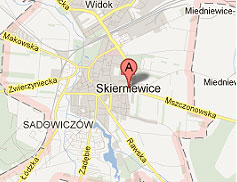PUBLIKACJE NAUKOWE
WYSZUKAJ PUBLIKACJE
The impact of phytosanitary treatments in the soil with signs of fatigue on the growth of apple seedlings and populations of bacteria and fungi
Sobiczewski P., Treder W., Bryk H., Klamkowski K., Krzewińska D., Mikiciński A., Berczyński S., Tryngiel-Gać A.
2018
Polish Journal of Agronomy, 34: 11-22
replant disease, cereals, white mustard, Pseudomonas spp., Bacillus spp., Trichoderma spp
The influence of ultrasound and cultivar selection on the biocompounds and physicochemical characteristics of dried blueberry (Vaccinium corymbosum L.) snacks
Celejewska K., Mieszczakowska-Frąc M., Konopacka D., Krupa T.
2018
Journal of Food Science, 83(9): 2305-2316
anthocyanins, hybrid drying, osmotic dehydration, phenolic compounds, sonication
Trichoderma atroviride enhances phenolic synthesis and cucumber protection against Rhizoctonia solani.
Nawrocka J., Szczech M., Małolepsza U.
2018
Plant Protection Science, 54(1): 17-23
Trichoderma spp., Rhizoctonia solani, biocontrol, defence response
Triterpenic acid content in the fruit peel of Malus x domestica Borkh. depends on the growing technology
Viskelis J., Uselis N., Liaudanskas M., Janulis V., Bielicki P., Univer T., Lepsis J., Kviklys D.
2018
Zemdirbyste-Agriculture, 105(1): 71–78
apple-tree, bioactive compounds, growing technologies
Tubercle disease of sugar beet roots (Beta vulgaris) found in Poland is neither caused by Xanthomonas beticola nor by tumorigenic Agrobacterium/Rhizobium
Moliszewska E., Nabrdalik M., Puławska J., Piszczek J.
2018
Journal of Plant Diseases and Protection, 125(6): 581-583
Xanthomonas gall, Rhizobium radiobacter, Agrobacterium tumefaciens, tubercle disease, sugar beet
Tulip
Orlikowska T., Podwyszyńska M., Marasek-Ciołakowska M., Sochacki D., Szymański R.
2018
In: Ornamental Crops, Handbook of Plant Breeding, vol. 11. Eds. J. Van Huylenbroeck, Springer, Cham, 28: 769-802. ISBN 978-3-319-90697-3
Tulipany w kolekcji ozdobnych roślin cebulowych Instytutu Ogrodnictwa w Skierniewicach
Treder J., Sochacki D.
2018
Red. D. Sochacki, J. Rabiza – Świder, E. Skutnik, Wyd. Katedra Roślin Ozdobnych SGGW w Warszawie, Warszawa: 158-163. ISBN 978-83-914548-5-5
Varroacidal efficiency of treatment with amitraz in honey bee colonies with brood
Pohorecka K., Skubida P., Semkiw P.
2018
Journal of Apicultural Science, 62(2): 285-292
amitraz fumigation, control, honey bee, Varroa destructor
Water balance methods
Gallardo M., Treder J.
2018
In: The Fertigation Bible. Technologies to optimise fertigation in intensive horticulture. Eds. R. Thompson, I. Delcour, E. Berckmoes, E. Stavridou, FERTINNOWA consortium, Sint-Katelijne-Waver, 10.3.: 10.17-10.21. ISBN 978-1-5272-2327-1
Weather sensors
Campillo C., Carrasco J., Klamkowski K., Treder W.
2018
In: The Fertigation Bible. Technologies to optimise fertigation in intensive horticulture. Eds. R. Thompson, I. Delcour, E. Berckmoes, E. Stavridou, FERTINNOWA consortium, Sint-Katelijne-Waver, 10.28.: 10.133-10.138. ISBN 978-1-5272-2327-1
INSTYTUT OGRODNICTWA – PAŃSTWOWY INSTYTUT BADAWCZY
Siedziba Dyrekcji
ul. Konstytucji 3 Maja 1/3
96-100 Skierniewice
Tel.: 46 833 22 11 do 13 - Centrala
Fax: 46 833 31 86
e-mail: io@inhort.pl
ul. Pomologiczna 18
96-100 Skierniewice
Tel.: 46 833 20 21 - Centrala, 46 833 42 23 - Centrala
Fax: 46 833 32 28
ZAKŁAD PSZCZELNICTWA
W PUŁAWACH
ul. Kazimierska 2A
24-100 Puławy
Tel.: 81 886 42 08, 81 886 21 64
Fax: 81 886 42 09
e-mail:zaklad.pszczelnictwa@inhort.pl
© Copyright 2011 Instytut Ogrodnictwa, wszystkie prawa zastrzeżone / Kontakt: < Redaktor > < Webmaster >


